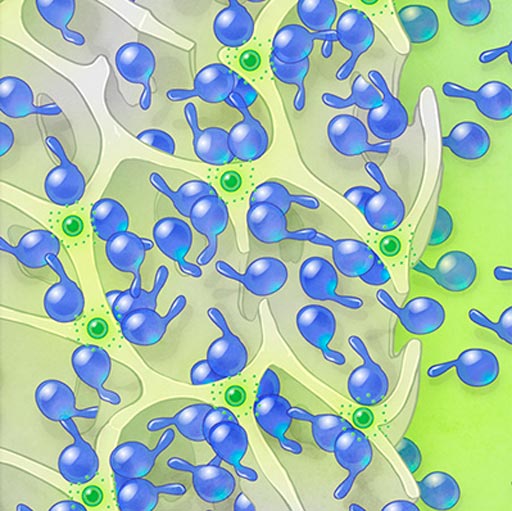Nanoparticle Reagent Simplifies Gene Expression Programming
By LabMedica International staff writers
Posted on 13 Sep 2017
Novel nanoparticle carriers were used to deliver mRNA directly to specific cell types (T-cells of the immune system and blood stem cells) in order to induce short-term changes in gene expression that could be harnessed to treat diseases ranging from cancer to diabetes.Posted on 13 Sep 2017
Therapies based on immune cells have been applied for a variety of diseases. However, the viral and electroporation methods used to create such cytoreagents are complex and expensive. Therefore, investigators at the Fred Hutchinson Cancer Research Center (Seattle, WA, USA) developed targeted mRNA nanocarriers that were simply mixed with cells to reprogram them via transient gene expression. The nanoparticles were loaded with a gene-editing tool that snipped out natural T-cell receptors, and then was paired with genes encoding a "chimeric antigen receptor" or CAR, a synthetic molecule designed to attack cancer cells. Ultimately, the nanoparticles were removed from the body like other cell waste.

Image: A diagram of a scaffold loaded with CAR T-cells and “microspheres” containing nutrients to help the cells multiply and then leave the scaffold to go attack cancer cells (Photo courtesy of the Fred Hutchinson Cancer Research Center).
This approach was called "hit-and-run" genetic programming, since the transient effect of mRNA did not change the DNA, but it was enough to make a permanent impact on the cells' therapeutic potential.
In the August 30, 2017, online edition of the journal Nature Communications the investigators described three examples that they had used to establish that the approach was simple and generalizable. First, they demonstrated that nanocarriers delivering mRNA encoding a genome-editing agent could efficiently knockout selected genes in anti-cancer T-cells. Second, they imprinted a long-lived phenotype exhibiting improved antitumor activities into T-cells by transfecting them with mRNAs that encoded a key transcription factor of memory formation. Third, they showed how mRNA nanocarriers could program hematopoietic stem cells with improved self-renewal properties.
"Our goal is to streamline the manufacture of cell-based therapies," said senior author Dr. Matthias Stephan, a biomaterials expert at the Fred Hutchinson Cancer Research Center. "In this study, we created a product where you just add it to cultured cells and that is it -- no additional manufacturing steps. We developed a nanocarrier that binds and condenses synthetic mRNA and protects it from degradation. Just add water to our freeze-dried product. If you know from the scientific literature that a signaling pathway works in synergy, you could co-deliver mRNA in a single nanoparticle. Every cell that takes up the nanoparticle can express both."
Related Links:
Fred Hutchinson Cancer Research Center













